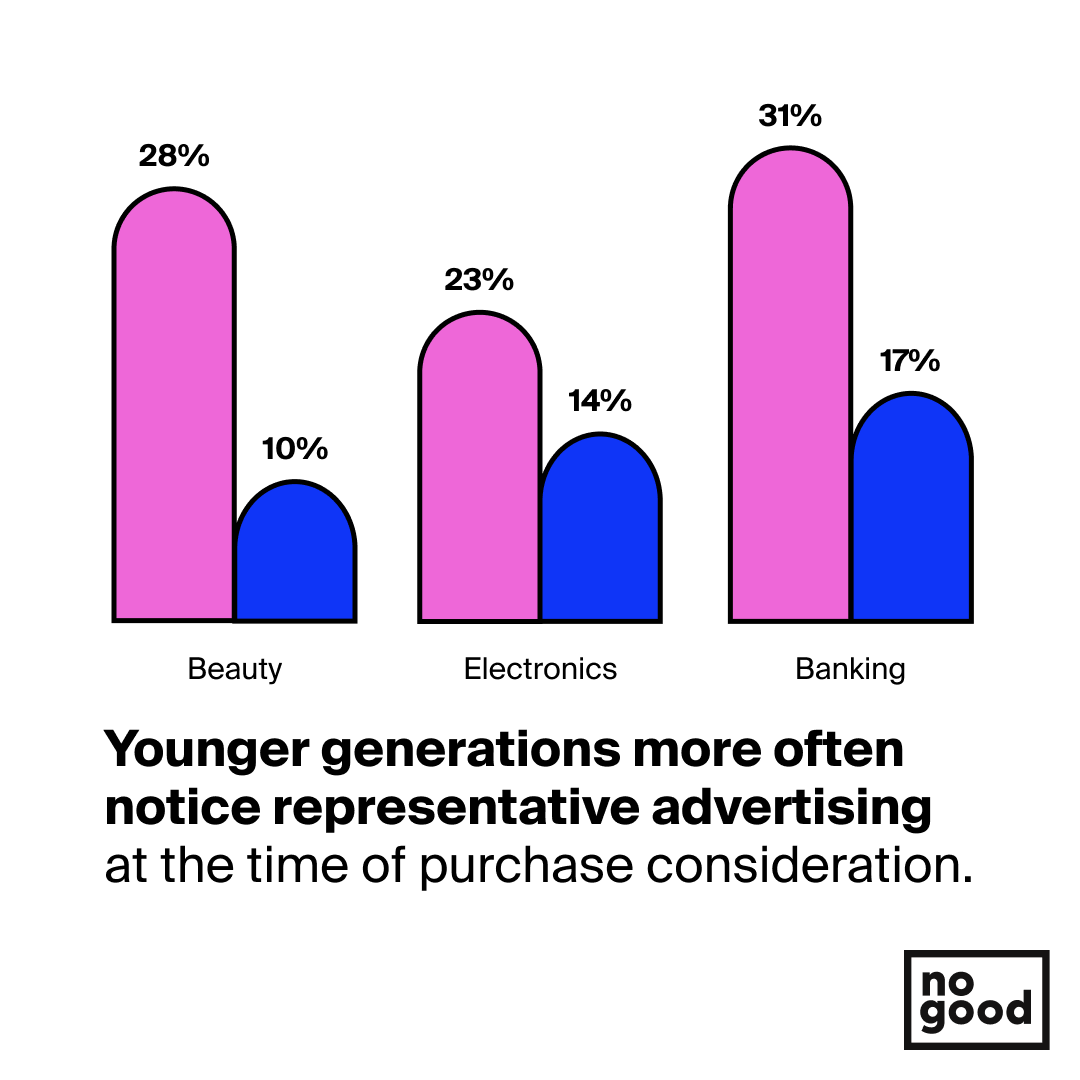Over the past few years, we’ve seen more companies prioritize their diversity, equity, and inclusion growth marketing efforts due to the growing social awareness of inequities and lack of cultural responsiveness within organizations. Diversity, equity, and inclusion have become buzzwords in the business world (for good reason), but when company culture and practices don’t reflect the principles of authentic DEI values – the damage to a brand can be irreversible. So how do big brands miss the mark when it comes to their marketing campaigns? We’ve seen it time and again with companies like Uber, Dove, Bloomingdales, Burger King, L’Oreal, and countless others.
When Burger King launched an International Women’s Day campaign in 2021, it sparked outrage across the web with a tweet that read “Women belong in the kitchen”. It was part of a larger tweet thread that eventually revealed their initiative to increase the number of female head chefs in restaurants. This is a perfect example of how good intentions can go horribly wrong when marketing decisions are made on the basis of virality – and not enough consideration is given to other possible outcomes. As a company, your brand and marketing should embody your vision and values in order to attract and retain the right customers. There is a need for deliberate, big-picture messaging that transcends organizational silos and resonates with real people – your customers. BUT, performative marketing isn’t cool – and people will not only see through it, but they’ll also call you out on it.
In 2020 L’Oreal ended up in hot water, receiving intense public backlash over a statement supporting citizens and activists who were taking to the streets to fight for equality and justice. Their effort to stand in solidarity was quickly criticized as an inauthentic attempt at “jumping on the bandwagon”, and there was plenty of evidence to back that claim. Only a couple of years prior, L’Oréal Paris ended its contract with its first-ever transgender ambassador (who is also a POC) after she spoke out about racism and white supremacy. The brand claimed that her statements were “at odds” with its values. So yeah, if your brand doesn’t genuinely support the values and ideals of a cause, then your marketing shouldn’t pander to that audience just for optics.
Some might argue that major brands like L’Oreal can handle the bad press and public outrage – and that’s obviously true since it’s unlikely that the largest cosmetics company in the world is getting canceled. A conglomerate may be able to enlist a crisis comms team to spin their way out of a campaign that lands poorly with the public, however, startups and smaller businesses can, and have, their reputation made, or broken by a single campaign.
It’s time for brands to take a fresh approach by focusing on diversity, equity, and inclusion as an important part of their growth marketing strategy. Here are some ways you can ensure your brand is positioned for success in this changing environment.
Authenticity Matters
As more marketers incorporate diversity, equity, and inclusion into their growth marketing strategies, consumers (who are increasingly diverse) expect brands to follow through on these promises. The average consumer views 10,000 advertisements during their waking hours. Most consumers (especially younger generations) are expecting more from their favorite brands, not just the typical promotions. Instead, they are questioning brand values and authenticity when it comes to supporting social causes. Marketers need to authentically communicate messaging if they are to effectively connect with future customers. Brands like Target, Nike, and Ben & Jerry’s are doing brilliant things to champion diversity. They understand that the path to successful D&I requires acknowledgment and change at every level within the business – and you often see that reflected in their unapologetic approach to celebrating the unique differences of a diverse audience.
Fun Fact: In a Deloitte survey of 11,500 global consumers, the youngest respondents (from 18 to 25 years old) took greater notice of inclusive advertising when making purchase decisions (figure 1).

But it’s not enough to just market inclusiveness or diversity. Research shows that at least 57% of consumers are more loyal to brands that commit to addressing social inequities in their actions. Now more than ever brands are expected to demonstrate they are promoting equitable outcomes in all spheres of influence: hiring, supplier diversity, salary transparency, HR, etc. Recent data tells us that high-growth brands (defined as those with annual revenue growth of 10% or more) are more frequently establishing key performance metrics for diversity, equity, and inclusion (DEI) objectives than their lower-growth competitors.

Diversity, Equity, and Inclusion Growth Marketing Tips for Brands
If you want your marketing to be more inclusive and diverse, start by being proactive. Inclusive advertising is understanding with empathy who your customers are, representing them accurately, and more importantly, recognizing who you’re excluding in your marketing materials.
1) Analyze what aspects of DEI are most critical for your business and then create a list of goals and objectives. This exercise will help you understand how you want to reach out to diverse audiences with new marketing strategies.
2) Take a deep dive into your existing marketing plan and look at the specific ways it supports the company’s strategy. If there are gaps in your current marketing strategy, chances are you’ll need to make some changes.
3) Showcase human diversity, equity, and inclusion in your growth marketing campaigns– considering the dimensions of human diversity, like age, gender, ethnicity, sexual orientation, location, language preference, and gender expression. Don’t forget about experiential diversity likeability, parental status, marital status, military status, affinities, and job function.
4) Audit your website and landing page content – Inclusive advertising doesn’t end with the ad. In fact, half of the customer experience with your advertising resides where you send them after they click — which means it’s critical you demonstrate diversity in your landing pages or website, as well.
5) Audit your ads, content, and landing pages for accessibility – Not considering accessibility is like saying to 1 in 5 customers, “I don’t want your business.” You may know who your audience is as a business owner or marketer, but if you’re not maximizing accessibility, you could be missing out on a large number of potential customers with visual, auditory, physical, and cognitive differences. Here’s a link to a cool accessibility checker plugin.
6) Mitigate bias in your ads, content, and data – Bias can lead to missed opportunities or even damage your brand’s reputation. One way to avoid stereotypes and appropriation is by sourcing real stories and user-generated content. We need to remember that our role is to see through the eyes of our customers, and we only can offset our biases by proactively trying to see a different perspective. According to research conducted by Kantar Millward Brown: progressive ads trigger more positive engagement and are 47 percent more likely to be effective in both the long and short term. And what about men? More modern depictions of masculinity are also 30 percent likelier to perform well.
7) Inclusive and authentic image selection – Choosing imagery is an important part of the process of constructing a meaningful and inclusive customer experience. Inclusive advertising isn’t just about representing everyone — it’s also about making everyone feel your products or services are for them.
At this point, it’s indisputable that diversity, equity, and inclusion are good for business. When it comes to developing an authentic (and winning) strategy, it’s crucial that your team is mindful of how certain depictions and messaging could be perceived. When you have a diverse team, those perspectives are an important aspect of creating inclusive content/campaigns, along with intentional and thoughtful consideration throughout the planning process.
If you want your company to continue thriving and growing, it’s important to think about how your brand is positioned for success in today’s changing environment. This is true at every stage of a company, and for every facet of its operation. While it’s relatively easy to put together a dynamic group of individuals for a campaign, it’s just as easy for those within a company to broadcast the inequities reflected in the company’s DNA. Ultimately, if you approach your business, and your growth strategies with intention, and make considerations for diversity, equity, and inclusion at every step — you’ll be just fine.





